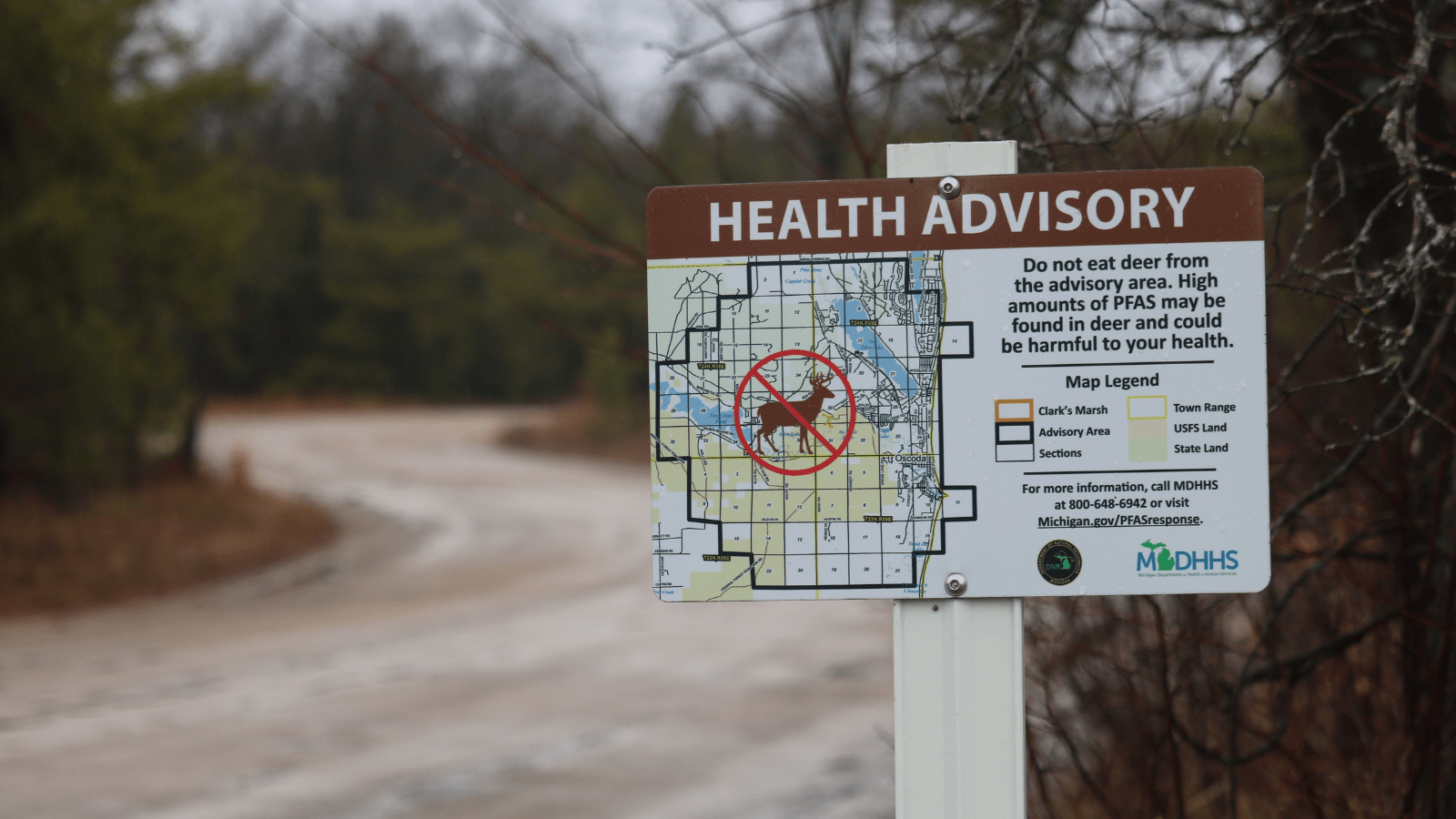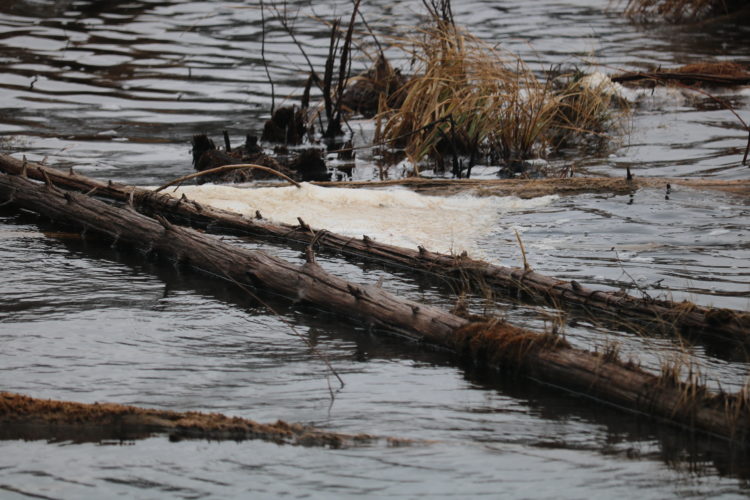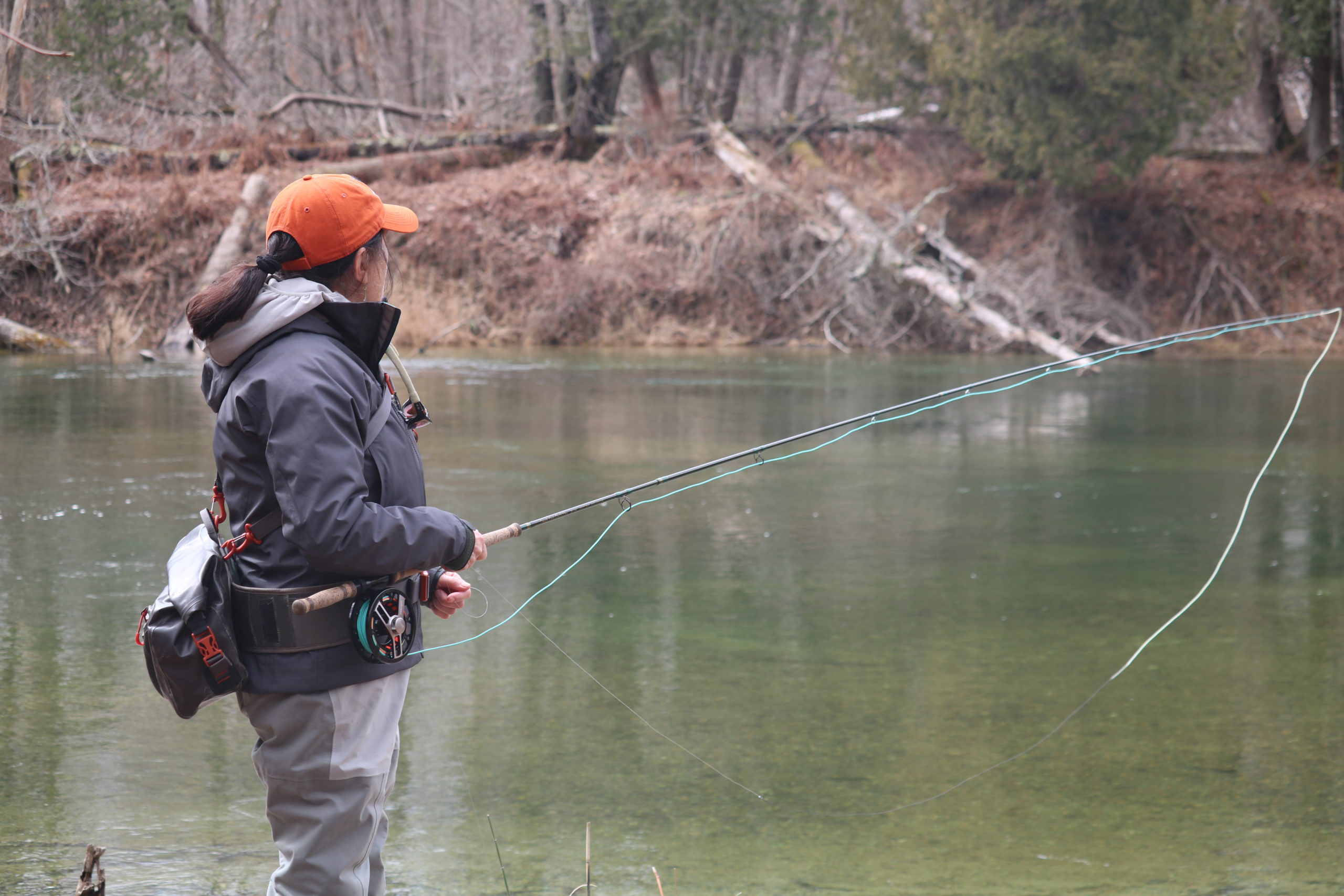We have much more to do and your continued support is needed now more than ever.
Michigan Tells Hunters: Deer Near Toxic Site Not Safe To Eat
The source is a closed military base – but the U.S. Air Force is slow-walking crucial clean-up efforts

There are few activities more “Pure Michigan” than hunting, preparing, and eating wild game from in and around our state’s abundant woodlands and wetlands. Spending time outdoors during the crisp fall hunting season is a time-honored tradition in Michigan and all around the Great Lakes. It’s a heritage we pass on from parents to children over many generations, and one of the ways we learn to understand and respect the rhythms of nature and wildlife.
That’s why so many Michigan hunters were shocked in 2018 when toxic chemicals flowing from the Wurtsmith Air Force Base – which by that time had been closed for 25 years – led to a “Do Not Eat” advisory for deer within a five-mile radius of Clark’s Marsh.
This serene, preserved wetland on the east side of the state, near the community of Oscoda, is just a mile north of the AuSable River, and just five miles west of Lake Huron. Clarks’ Marsh is a storied hunting, fishing, and birdwatching spot for local residents and visitors from near and far.
Those outdoor recreation stories have now been interrupted by a known culprit: per- and polyfluoroalkyl substances, or PFASs, which were used for many years in firefighting foams at Wurtsmith.

An alarming 547 parts per billion (ppb) of one of these compounds was found in the muscle of a deer specimen near Clark’s Marsh in 2018. Since that time, a consumption advisory for all aquatic and semi-aquatic wildlife has been put in place at Clark’s Marsh as well. It is the first of its kind in the Great Lakes region. While there are more than 160 sites with PFAS contamination in Michigan, the levels found in fish and wildlife in and around Clark’s Marsh are the highest in the state, testing at “world record levels of contamination.” Any wild fish or game with over 300 ppb of any PFAS is considered unsafe for human consumption.
PFASs, also known as “forever chemicals,” are created with a tight chemical bond between carbon and fluorine, so they do not degrade in the natural environment. For the same reason, products coated with PFASs can be waterproof, stain-proof, and flame resistant. As a result, these hazardous compounds were widely used in everyday cookware, clothing, food packaging, and many other products. And because they linger for so long, PFASs are now found nearly everywhere, even inside our bodies.
The U.S. Centers for Disease Control estimates that 97% of Americans have detectable levels of PFASs in their bloodstreams. The compounds are linked to life-threatening diseases for people and wildlife, including cancer, liver and thyroid disease, immune system disorders, and low infant birth weights.
A special place with special problems
The beautiful shore of Lake Huron is a special place for me and my family, spanning four generations. My The beautiful shore of Lake Huron is a special place for me and my family, spanning four generations. My grandparents began vacationing in East Tawas, about 20 miles south of Clark’s Marsh, in the 1950s, when my Dad was just a toddler. My Dad, in turn, brought me to the area’s beautiful beaches, forests, and rivers. That’s where we spent our time as a family out in the woods, planting trees, learning to love and revere the outdoors and wild places. With my husband (who also spent summers and holidays in the area as a child) I now bring our own children to East Tawas, where we love to kayak, fish, and go birding along the Au Sable River.

As it happens, the very first public meeting I ever attended about PFAS contamination, in 2019, took place in the very same Catholic church in Oscoda where my husband and I were married 12 years earlier. I’m saddened, of course, that a place so special to me has been spoiled by industry, and I am outraged that the community and this place have been neglected by a branch of our own government. I also know the situation puts the biggest burden on full-time residents of the area who live, work, and are raising their children here.
Hunting and fishing aren’t the only traditions we’re proud of here in Michigan. We also have a powerful legacy of citizen activism, including labor, community, and environmental organizing. In 2017, Oscoda-area homeowners and businesses formed Need Our Water (NOW), a spirited and sophisticated advocacy group. Partnering with NOW, the NWF Great Lakes Regional Center is providing communications, policy, legal and scientific assistance to residents concerned about the safety of their water.
It’s a privilege to work with local advocates who have confronted not only health impacts to themselves and their family members, tainted fish and game, and also foam on their precious beaches and contamination in their daily drinking water.
The tenacity of NOW’s members helped shine a spotlight on the PFAS crisis in Michigan and across the nation, also spurring NWF’s work on this critical issue. In fact, at the National Wildlife Federation’s Annual Meeting in 2020, our governing body adopted a resolution on addressing PFAS contamination, particularly in fish and wildlife, as a national priority. The resolution was spearheaded by the Michigan affiliate, Michigan United Conservation Clubs, and supported by affiliate organizations from the Great Lakes region and across the country.
Eleven years and counting
Toxic residue from firefighting foams – mostly used in training exercises – was first discovered at the Wurtsmith site in Oscoda in 2010. You might think that eleven years later, an agency with the mighty resources of the U.S. military would have already completed a thorough clean-up.
Sadly, you would be mistaken. To tell the true story of the history of PFAS Contamination at the Former Wurtsmith Air Force base, Need Our Water and NWF have produced this report, which documents the facts about what the Air Force and the State of Michigan have, and have not, done to clean up PFAS contamination in Oscoda.
Here are some highlights:
- The Air Force spent nearly a decade studying the problem and has yet to release a plan for a comprehensive clean-up that must address contamination spread over eight square miles of groundwater. The dangerous PFAS plumes threaten not only Clark’s Marsh and nearby Van Etten Lake, but also the 138-mile long Au Sable River. All three bodies of water empty into Lake Huron – a source of drinking water for Oscoda and other communities.
- U.S. Rep Dan Kildee, who represents Oscoda and nearby communities in Congress, successfully advocated for a $13.5 million appropriation to jump start remediation efforts. In April of 2020, the Air Force said the funds would be used for… more studies.
- In June 2020, responding to community outrage and pressure from Congress, the USAF reversed course. The Air Force announced it would spend about half of the $13.5 million on three interim remedial actions to address the community’s highest priorities, including additional systems to remove PFASs from Clark’s Marsh and Van Etten Lake.
After years of study, in March the Air Force did finally release a clean-up plan for Clark’s Marsh, just one small portion of the affected area. But Air Force officials announced they would not follow current Michigan law which mandates strict limits on PFASs as part of the project. Their clean-up efforts, military officials say, are grandfathered under earlier, looser restrictions.
The unwillingness of the Air Force to follow Michigan’s laws, unfortunately, is characteristic of a process that has operated with a distinct lack of transparency and accountability to the local community.
In April, at a community meeting in Oscoda to discuss the PFAS problem, NOW co-leader Cathy Wusterbarth tried to read into the record a letter signed by more than 200 businesses, organizations, community members, and people across Michigan.
Cathy wanted to inform top decision-makers that local stakeholders want rapid, rigorous remediation of PFAS contamination in a way that follows – rather than ignores – state law. But Air Force managers cut her off, telling her to speak at the end of the session – then gaveled the meeting to a close without allowing public comment from Wusterbarth or anyone else.
Actions like this have to change – and the Air Force has the opportunity to set a different precedent moving forward – a precedent that respects and allows space for the community and the public to voice their concerns and ask their questions to those running the clean-up planning process.
The people of Oscoda have a right to understand and be an active part of the plan to remediate the toxic hazards that have spread far and wide in their community. And they have the invaluable local knowledge and sense of place that cannot be learned in a textbook – and must be incorporated into planning to ensure a clean-up that truly respects people, wildlife, and nature.
In the meantime, USAF just released another partial plan for remediation of PFAS contamination at Van Etten Lake. Public comments are open until September 3, 2021; you can join a webinar being hosted by our partner Need Our Water to learn more about the proposed plan on Thursday, August 26th at 7pm. And you can share your views with the Air Force here.
Communities across the country
There’s so much at stake here. The people of Oscoda and wild places like Clark’s Marsh, the Au Sable River, and Lake Huron are top of mind when I think about cleaning up PFAS contamination there. Wurtsmith also serves as a bellwether for the 700 additional PFAS contaminated military sites across the United States. If you can believe it, the clean-up process at Wurtsmith is the farthest along of any PFAS military site in the country. If we don’t get it right here, the impact will be felt locally, and in communities and wild places across the country.
That’s why we have to get it right the first time and all of us here at the National Wildlife Federation’s Great Lakes Regional Center are committed to supporting our local partners to make sure that happens. One of my biggest goals as a parent is to instill the love of place and of nature into my children, just as it was instilled in me as a child. Along with that love of nature comes the belief that everyone counts and everyone’s voice deserves to be heard.
I’d be delighted if someday my children bring their children to this beautiful area, just like their parents and grandparents did. When that day comes, I hope they can swim in clean lakes, kayak on uncontaminated rivers – and eat, with no fear, whatever fish and game they are lucky enough to catch.
Please ask the U.S. Air Force to protect Michigan’s citizens, water, wetlands, and wildlife from toxic PFAS pollution today.
Take Action!




















